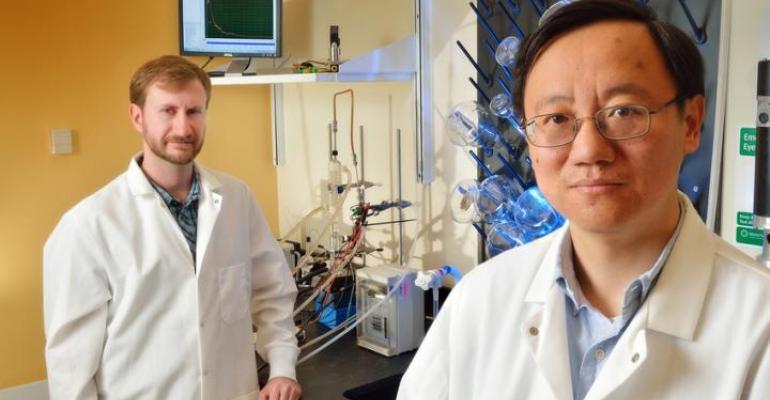Researchers say they have devised a new biological method that greatly reduces the time and money it takes to produce hydrogen fuel.
The system, created by a team of Virginia Tech researchers, uses abundantly available corn stover – the stalks, cobs and husks – to manufacture the zero-emissions fuel.
“We believe this exciting technology has the potential to enable the widespread use of hydrogen fuel-cell vehicles around the world and displace fossil fuels,” Joe Rollin, a former doctoral student at Virginia Tech Rollin says.
Percival Zhang, of the university’s Department of Biological Systems Engineering, says the findings, published in the Proceedings of the National Academy of Sciences, could help speed the widespread arrival of hydrogen-powered vehicles in a way that is inexpensive and has extremely low carbon emissions.
“This means we have demonstrated the most important step toward a hydrogen economy – producing distributed and affordable green hydrogen from local biomass resources,” Zhang says in a statement.
The team already has received funding for the next step of the project – scaling up production to a demonstration size.
Rollin, co-founder with Zhang of the start-up company Cell-free Bioinnovations, is the lead author on the paper.
Their new discovery is a breakthrough in two ways.
Unlike other biological hydrogen-fuel production methods that rely on highly processed sugars, the Virginia Tech team is using dirty biomass – the husks and stalks of corn plants – to create the fuel.
This not only reduces the initial expense of creating the fuel, it allows the use of a biomass readily available near the processing plants, localizing the enterprise.
Rollin’s research confirmed the ability of the system to use both sugars, glucose and xylose, at the same time, which increases the rate at which the hydrogen is released. Typically in biological conversions, these two sugars only can be used sequentially, not simultaneously, which adds time and money to the process.
One of the biggest hurdles to widespread hydrogen use is the capital cost required to produce the fuel from natural gas in large facilities. Distribution of the hydrogen to users of fuel-cell vehicles is another key challenge.
Rollin's model increases reaction rates threefold, decreasing the required facility size to about that of a gas station, which reduces associated capital costs. The dominant method for producing hydrogen now uses natural gas, which is expensive to distribute and causes carbon emissions.
The team also increased enzymatic generation rates. This reaction rate is fast enough for hydrogen production in distributed hydrogen-fueling stations. The achieved reaction rate is at least 10 times that of the fastest photo-hydrogen production system.
The enzymatic reactions being used in this system generate high-purity hydrogen, perfect for hydrogen fuel-cell vehicles.
The modest reaction conditions also indicate the feasibility of low-capital requirements for building distributed hydrogen generating and fueling stations.
The project was funded in part by the Shell GameChanger initiative and the National Science Foundation's Small Business Technology Transfer program.





